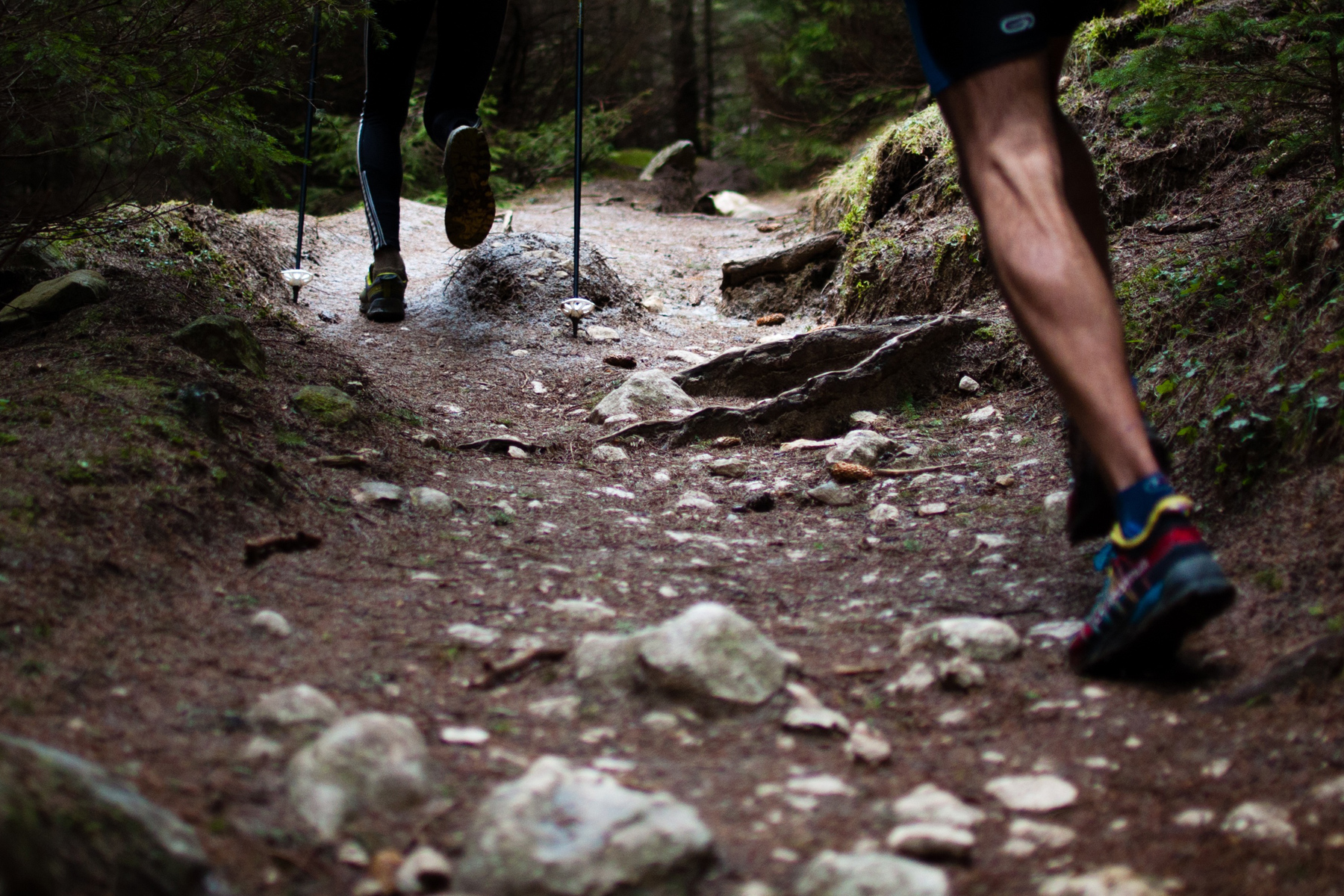If you’re looking to break your normal roadside running routine, we suggest giving trail running a shot. It’s a great opportunity to step away from city and get lost in nature while you give your lungs and legs a great workout.
Here are a few tips on how to make the transition from pavement to trail.

Be Prepared & Stay Weather Alert
Trail runs tend to have a certain level of unpredictability. ‘Flat’ is a term rarely used in trail running as an increase in elevation can come quickly and the terrain is often changing. With a natural trail comes a path that is by definition not uniform — tree roots, stones, mud, water, gravel and debris lead to significant stride-to-stride changes and a dynamic running surface. Not to mention, you may run the same trail out at Browns Woods twenty times, but a spring/summer storm could easily place debris in your path.
Changing conditions on the trail makes having the appropriate gear all the more important. Wicking and quick drying fabrics help you stay dry and cool, whereas technical base layers and shells can help keep you warm and protect against precipitation. If you’re in for a longer run, it’s also wise to bring along your hydration and maybe a couple of meal packed bars or energy chews. While becoming ‘stranded’ due to weather or taking a wrong turn is something we would all deem unlikely, in the event that it does happen — it’s better to be prepared than not.
Work Trails in Gradually
When you run on the trail, you’re engaging your body in a different way from running on the treadmill or pavement. It’s important when starting out to put more emphasis on form, foot placement and overall time versus speed or distance.
Slow down. Trail running is about effort, not necessarily managing your pace in relation to how far you’ve gone. What you could run on the road is going to be way different from the trail because there are so many factors that play into and effect your stride. Walking up or down steep sections shouldn’t be something you are disappointed in. Steep descents are rather rough on your feet, ankles, calves and backs which could lead to fatigue or injury if not approached appropriately.
Remember — you’re strengthening muscles in ways they aren’t usually engaged. It will take time for that strength to develop.
Keep Your Head Up
Scan the trail 10-15 feet ahead rather than keeping your head down. It may seem uncomfortable at first, but you have to trust that your feet will follow your eyes because it’s better to see what’s coming 10-15 feet away rather than 1-2 feet away. Whenever possible, choose to take direct lines between obstacles, watch for variable weather conditions (always good to check before you set out) and continually try to anticipate for terrain changes.
While most of us prefer a free, open trail, oftentimes we come across more leisurely trail users or mountain bikers.Runners should yield to the biker. If you’re running towards another runner and there is no room to pass, the uphill runner (who’s running downhill) yields to the downhill runner (who’s running uphill).
Safety First
Research before you go. It’s always good to establish some level of familiarity with the trail route and trail marking system before setting out for your run.
Use the buddy system. Ask someone to run with you or let someone know when and where you’ll be on the trails. That way, if you do get injured on the trail, you’ll have someone there to help you, or someone to look for you when you don’t return at your specified return time.
Lastly be sure to allot enough time to complete the trail before sundown or bring a headlamp along. Trying to make your way back in pitch black can be dangerous, perhaps a little scary and ultimately not the most fun way to wrap up the evening.
You May Fall Down
Falling down is part of the gig. As you progress to more difficult routes, you’re likely to take a tumble or two — and that’s okay. Try to resist the natural urge to put your hands out as this can lead to broken wrists and hand damage. Sliding or rolling often do the trick, just make sure you’re covering and protecting your head.
Practicing good form helps to prevent most falls. Just remember to pick up your feet, always scan the trail ahead and keep your speed at a pace where you feel the most in control.




